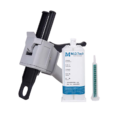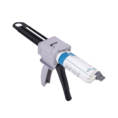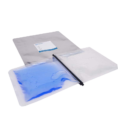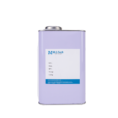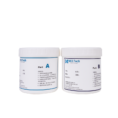Potting Gel
Here’s a detailed breakdown of the advantages, disadvantages, and use cases for silicone potting gel, epoxy potting gel, and polyurethane potting gel, along with guidelines on how to choose the most appropriate material for your application.
How to Choose the Right Potting Gel?
Advantages:
- Elasticity & Flexibility: High flexibility and excellent stretchability make it ideal for cushioning and sealing applications.
- Thermal Stability: Wide operating temperature range, typically -60°C to 200°C.
- Chemical Resistance: Good resistance to UV, ozone, and many chemicals.
- Non-Toxic & Biocompatible: Often used in medical, food-grade, and skin-contact applications.
- Durability: Long-lasting and does not degrade easily over time.
- Electrical Insulation: Excellent dielectric properties, making it suitable for electronic applications.
Disadvantages:
- Cost: More expensive than epoxy or polyurethane gels.
- Mechanical Strength: Lower mechanical strength compared to epoxy.
- Adhesion: Poor adhesion to certain surfaces unless primers are used.
- Limited Customization: Less customizable in terms of hardness compared to polyurethane.
Applications:
- Medical implants, skin-contact devices.
- Cushioning materials, shock absorbers.
- Sealing and insulating in electronics.
Advantages:
- High Adhesion: Bonds well to a wide range of substrates, including metals, ceramics, and plastics.
- Mechanical Strength: High hardness and durability once cured.
- Thermal Resistance: Good resistance to high temperatures (typically up to 150°C, sometimes higher with special formulations).
- Chemical Resistance: Resistant to solvents, acids, and alkalis.
- Electrical Properties: Excellent for potting and encapsulating electronic components.
Disadvantages:
- Brittleness: Limited flexibility; can crack under impact or vibration.
- Limited Temperature Range: Less flexible at very low temperatures compared to silicone.
- Processing Complexity: Requires precise mixing ratios and controlled curing conditions.
- Toxicity Concerns: Can be toxic or irritating in uncured form; requires careful handling.
Applications:
- Electronic encapsulation and potting.
- Structural bonding in aerospace and automotive industries.
- Protective coatings for high-strength, chemically resistant surfaces.
Advantages:
- Flexibility & Elasticity: Excellent for applications requiring softness and cushioning.
- Versatility: Wide range of hardness levels and formulations available.
- Abrasion Resistance: Superior durability under wear and tear.
- Adhesion: Strong adhesion to a variety of surfaces.
- Cost-Effective: Generally cheaper than silicone.
- Chemical Resistance: Good resistance to oils and hydrocarbons.
Disadvantages:
- UV and Ozone Sensitivity: Can degrade under prolonged UV exposure (though additives can mitigate this).
- Thermal Resistance: Limited temperature range (-40°C to 120°C).
- Moisture Sensitivity: Requires careful storage as some formulations react with moisture during curing.
- Toxicity: Some components can release harmful vapors during curing.
Applications:
- Shock absorbers, cushions, and pads.
- Wear-resistant coatings and seals.
- Adhesives in industrial and consumer goods.
- High temperatures or outdoor use → Silicone.
- High mechanical strength and adhesion → Epoxy.
- Flexibility and cost-effective cushioning → Polyurethane.
- For flexibility and stretchability, choose Silicone or Polyurethane.
- For high rigidity and structural support, choose Epoxy.
- For exposure to UV and weather, Silicone is ideal.
- For resistance to oils and fuels, consider Polyurethane.
- If simplicity in handling is crucial, Silicone is the easiest to use.
- Both Epoxy and Polyurethane require careful mixing and curing.







